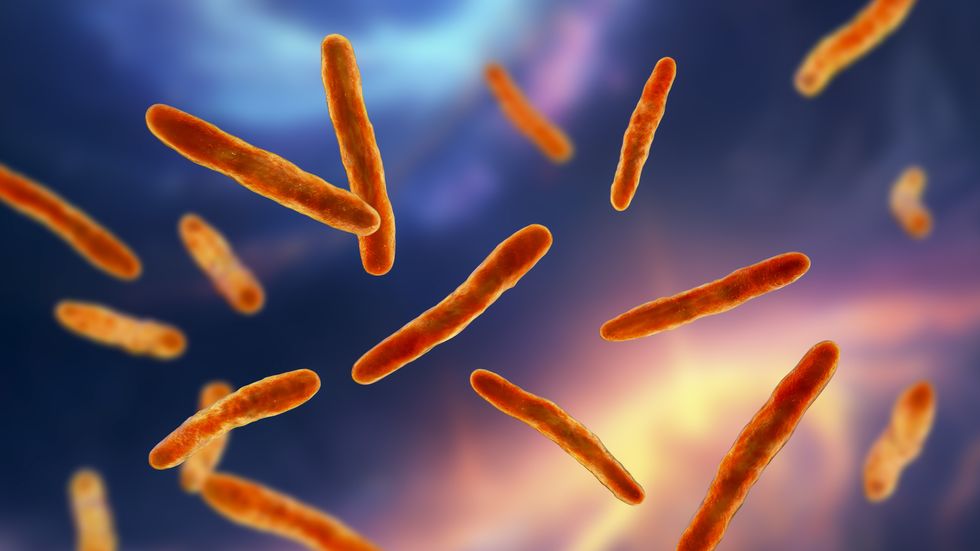The World Health Organization (WHO) has updated its list of priority pathogens as antimicrobial resistance intensifies
Getty Images
- WHO has updated its list of drug-resistant bacteria most threatening to human health
- Antimicrobial resistance undermines efforts to control and treat infectious diseases
Don't Miss
Most Read
Trending on GB News
The World Health Organization (WHO) has updated its list of priority pathogens in the face of the growing threat posed by antimicrobial resistance.
Featuring 15 families of antibiotic-resistant bacteria grouped into critical, high and medium categories for prioritisation, the list provides guidance on the development of new and necessary treatments to stop the spread of antimicrobial resistance.
Antimicrobial resistance, also known as AMR, occurs when the microorganisms which cause disease (including bacteria, viruses, fungi and parasites) are no longer affected by antimicrobial medicines such as antibiotics, antivirals, antifungals and antiparasitics that we use to kill them, prevent and treat the disease.
AMR poses an existential threat as it hinders efforts to control and treat high-burden infectious diseases.

AMR hinders efforts to control and treat high-burden infectious diseases.
Getty Images
The list covers 24 pathogens from 15 different families of AMR. The list includes antimicrobial-resistant tuberculosis, salmonella, and gonorrhoea.
The list also underscores the need of those working in public health to warn of the risk of transmissibility, treatability, and prevention options for different diseases.
“By mapping the global burden of drug-resistant bacteria and assessing their impact on public health, this list is key to guiding investment and grappling with the antibiotics pipeline and access crisis,” said Dr Yukiko Nakatani, interim Assistant Director-General for Antimicrobial Resistance, WHO.
Nakatani notes that the threat of AMR has "intensified" and that erosion of its efficacy places the gains of modern medicine at risk.
Pathogens ranked
According to the list, critical priority pathogens, such as gram-negative bacteria resistant to last-resort antibiotics, and Mycobacterium tuberculosis (TB) - resistant to the antibiotic rifampicin (used to treat several types of bacterial infections), present major global threats due to their high burden, and ability to resist treatment and spread resistance to other bacteria.
Gram-negative bacteria have built-in abilities to find new ways to resist treatment and can pass along genetic material that allows other bacteria to become drug-resistant as well.
High priority pathogens, such as Salmonella and Shigella, are of particularly high burden in low- and middle-income countries, along with Pseudomonas aeruginosa and Staphylococcus aureus, which pose significant challenges in healthcare settings.
Other high priority pathogens, such as antibiotic-resistant Neisseria gonorrhoeae and Enterococcus faecium, present unique public health challenges, including persistent infections and resistance to multiple antibiotics, necessitating targeted research and public health interventions.
Medium priority pathogens include Group A and B Streptococci (both new to the 2024 list), Streptococcus pneumoniae, and Haemophilus influenzae, which present a high disease burden. These pathogens require increased attention, especially in vulnerable populations including paediatric and elderly populations, particularly in resource-limited settings.
LATEST DEVELOPMENTS

TB) is resistant to the antibiotic rifampicin and presents a major global threat due to its high burden
Getty Images
The EU’s Health Emergency Preparedness and Response Authority (HERA) has welcomed publication of the updated WHO Bacterial Priority Pathogens List (WHO BPPL).
The BPPL 2024 also emphasises the need for a comprehensive public health approach to addressing AMR, including universal access to quality and affordable measures for prevention, diagnosis and appropriate treatment of infections.
It remains to be seen how prepared the world is for the next inevitable pandemic, however.
One statistical model by Duke University estimates that a pandemic similar in scale to COVID-19 is likely within a span of 59 years.








